#10 |
Nintendo Wii (2006) |
|
||||
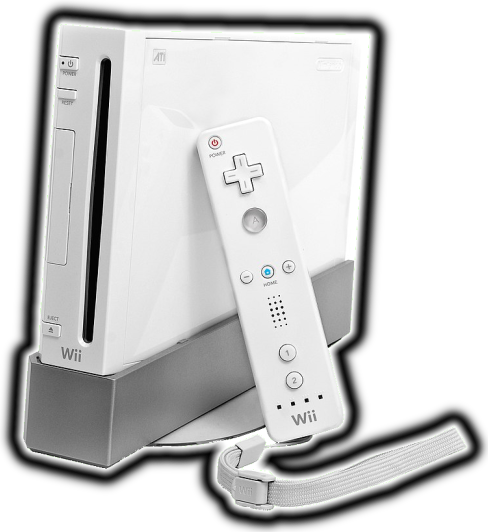 |
||||||
After the lackluster performance of the GameCube many in the industry were beginning to write Nintendo off, positing that with the entry into the market of major companies like Sony, and now Microsoft, Nintendo's ability to compete would be coming to an end and as such they'd be best off giving up on hardware entirely and focusing on what they were best at, making games, but now for the consoles of rival companies. The pundits possibly would've been right, if not for Nintendo making the brave decision to completely exit the tech race and side-step the market entirely with a drastically different product, this is what they did with the Wii. Whilst the Wii's tech was an improvement over the GameCube's it was a very modest one, being pretty much the same hardware but made to be something like 50% faster. Where the system differed from the competition was its focus on motion-controlled games, which would use a controller more akin to that of a TV remote than normal console controller. Nintendo had come to the conclusion that a TV remote style controller would be more familiar and less intimidating to non gamers, and that motion-controlled titles could bring in a new demographic to the console that would bolster Nintendo's own die-hard audience. They judged correctly as the system ended up winning the whole generation with over 100 million sold. The Wii often gets a lot of derision online as a gimmicky, or novelty console but personally I don't see any real truth to this criticism, at least not outside of the odd shovelware title here and there. I always found it to be a refreshing console with a lot of charm. The unique controller gave rise to a lot of memorable, quirky games and provided the Wii with a very atypical library of titles that often gave new experiences, even many of the sports games were quite unique. It was also well suited to family get-together's as a party console, with the whole family passing a controller back and forth playing Wii Sports and the like. In this fashion the Wii was able to bring in many new people who had never been interested in gaming before, as well as rekindling the passion for gaming in those who had long lost interest in the pastime. However, the Wii wasn't just about motion controls. Nintendo's avatar system, which they called Mii's were also an excellent and fun addition, with everyone able to make their own character with their own likeness, and often even use them in the games. Microsoft even ended up transparently nicking the Mii style designs for their Xbox 360 avatars later on. We also got the virtual console download service, with its attempt to bring the burgeoning retro-gaming scene into the mainstream and give people a more legal way to enjoy the classics of gaming history. Even where new games were concerned there was a resurgence in 2D games with Nintendo bringing out a bunch of 2D platformers this gen, as well as Konami creating its excellent "Rebirth" series. Some older style genre's well suited to the Wii's unique controller also made a resurgence, such as point and click adventure's and light gun games. There were certainly some problems for the system though. The Wii's online capabilities were limited to say the least, and the hardware's weakness in comparison to its competitors and even lack of HD output meant that the system was rarely home to the conventional blockbuster titles of the time. In fact the extra power of the Wii over the GameCube was reportedly rarely even used. Developers had used time consuming programming tricks to get the most out of the GameCube and where the Wii was concerned just chose to drop the effort in that area and use the Wii's extra power to pick up the slack. The most impressive Wii game possibly ended up being the truck game Zenkoku Dekotora Matsuri which used high polygon counts and complicated reflection mapping. On the upside though (and its a sad indication of the era in which it was made that this can be brought up as an advantage). The usage of older tech at least meant that the Wii was quite reliable as a console, and ended up really being the only reliable console of its generation. All in all a very unique and unconventional retro console that showed that Nintendo still had life in them yet, unfortunately they somehow managed to throw away all the good will and momentum the Wii afforded them within one generation, but that's that's a point for another day! |
||||||
| ------------------------------------------------------------------------------------------------------------ | ||||||
#09 |
Turbografx-16/PC-Engine (1987) |
|
||||
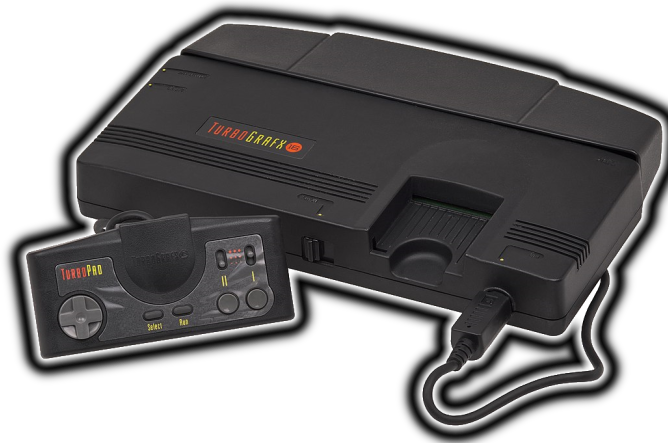 |
||||||
This very nifty little console manufactured by the electronics giant NEC in conjunction with classic Japanese gaming company Hudson Soft (known for their Bomberman series) kickstarted the 4th generation, appearing in Japan an entire year earlier than the Mega Drive. In its original form, the Japanese PC-Engine, it was a surprisingly powerful little thing with a ton of charm. Even though it was only about the size of a stack of three CD cases it had no problems holding its own against later consoles like the Mega Drive and SNES. Unfortunately though at the time a lot of stock was put into the idea of "bits" the Turbografx-16 was "only 8-bit, like the NES!" its detractors would say, not like the 16-bit Mega Drive and SNES, but of course bittage is ultimately a very poor indication of hardware power. When looking at the full picture what we had here was a console that was faster than the SNES and could put more colours on screen than the Mega Drive, it was a miniature wonder! (and anyone skeptical of this should check out hucard games like Street Fighter II, Parodius, and Bomberman 94). Its only real pitfall was a lack of background layers, causing the backgrounds to sometimes look a bit static in comparison to those of the competition. When being released in the US the small form factor was dropped as it was decided that such a small machine would be seen as weak, and not a serious piece of kit, so the American branch padded the console out with a lot of extra plastic to beef up the size! While the price/performance ratio was phenomenal that wasn't the most notable thing about the Turbografx though, no, the Turbografx was the first ever console to put games on CD media, this was done through the release of an add-on in 1989 that slotted onto the machine. This addition allowed many of the improvements that would be seen in the subsequent generation right here during the 4th gen! As the capacity of the CD format allowed for full CD audio with voice acted cutscenes and everything! So during a time when new Super Nintendo owners were raving about the quality of its music, the Turbografx already had in-game music that was CD quality! And of course with this addition the system also doubled up as a CD player, and the music playback and Karaoke features were a notable advantage of the machine, as during this time most people still did not yet have access to a CD player, and were still listening to their music on cassette tapes as CD players were still quite expensive at the time. But what about the price for all this extra kit? Well, though certainly more expensive to get a fully kitted out Turbografx than the baseline SNES and Mega Drive it wasn't that bad, mainly due to the core system already being the cheapest of the three on the market, and the CD add-on being highly competitively priced. Compared to the Mega Drive with CD add-on however there was absolutely no comparison at all, with Sega's add-on alone costing significantly more than all the Turbografx kit combined, and the whole package together costing close to double what you'd pay for the Turbografx. So this was a very reasonable price for what was being offered, much better than the Mega CD. An amalgamated system, the TurboDuo was also released pretty early on, and this is the most coveted model today due to its features and reliability. Games wise the system is a shmup fans dream, a huge number of them appeared on the system and the Turbografx was home to many of the best, such as Gate of Thunder, Spriggan, and Blazing Lasers. There were also many JRPG's created, but unfortunately due to the console's limited popularity outside of Japan many of the best of these, such as the Far East of Eden and Legend of Xanadu series, as well as Anearth Fantasy Stories, were never translated. Hopefully this'll change over time though as there seems to be a lot of homebrew interest in fixing this problem. Fighting games were also of special note here as games like Fatal Fury Special and World Heroes 2 were often far better than their Mega Drive and SNES counterparts due to the CD format, which allowed the retention of more animation frames, resulting in much higher quality animation. These games did however also often require a memory upgrade called the "Arcade Card" which fitted into the hucard card slot. The Turbografx-16 was an important footnote in gaming history and often doesn't get its due credit, unfortunately not gaining much popularity in the US and not really even getting a proper release in Europe, with the only official sales here in the UK being through mail order (which is a shame really as I think this was a big mistake, the Japanese PC-Engine was getting a ton of positive coverage on import in our magazines back in the day). Alas, it was not meant to be, still, the machines significant success in Japan, where it came second, managing to beat out the Mega Drive, carried it through the generation and provided it with an excellent library of games. |
||||||
| ------------------------------------------------------------------------------------------------------------ | ||||||
| #08 | Nintendo 64 (1996) |
|
||||
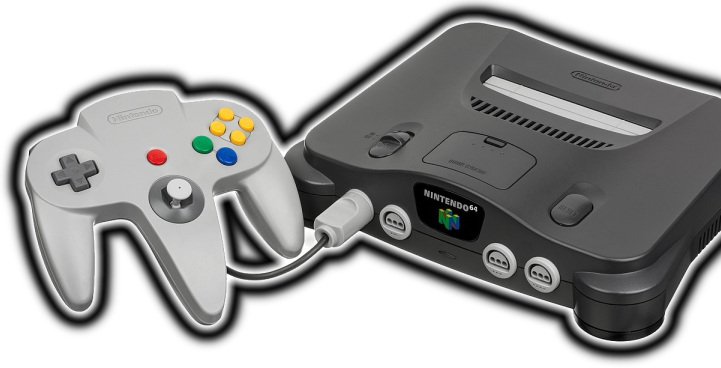 |
||||||
Nintendo's late offering into the 5th generation. The N64 was arriving 2 years after its competitors the Saturn and PS1 but with titles like Mario 64, with its full 3D world and 360 degree analogue control, providing the ability to walk or run at a precise pace, it quickly established itself as a major contender. Now, I do feel like I'm somewhat bending my own rules in some ways here, by this stage in the list the consoles really should have libraries that cover all genre's fully, and the N64's just didn't. Its impossible to deny its weakness in RPG's and fighting games (though some notable titles in those genre's did appear, Such as Paper Mario and Smash Bros, these exceptions were few and far between). One of the factors in this smaller software range was Nintendo's decision to continue with the cartridge format. N64 cartridges were more expensive to manufacture than CDs and couldn't hold as much data either. This led to N64 games being pricier than the competition, as well as them often missing the impressive Full Motion Videos seen in big PS1 titles of the time (such as the Final Fantasy's) because FMV was extremely memory hungry. Still, cartridges did have some advantages, they were more robust for example, and more importantly could load data almost instantaneously, so at least the N64 was largely free of obtrusive load times. The reason for all this was that Nintendo had grown very accustomed to exerting vice-like control over their consoles over the years, and a lot of this was predicated on them controlling the software manufacturing process, as such they were predictably very reluctant to move to a more open format. The thing with the N64 though is that many of the games it did have, and many of the choices they made in regards to the hardware, such as bringing back the Vectrex-style analogue thumbstick and incorporating it into the default controller, having four controller ports, and releasing the rumble pak (which was unveiled to the public in 1996), ended up becoming a standard for most subsequent consoles, with Sony especially having to rush to put their own analogue controller together for release 10 odd months later than Nintendo's and Sega's offerings, and getting themselves into legal hot water after taking the design for their rumble technology from Immersion Corporation in order to get the DualShock controller out as quickly as possible. The hardware features, whilst not created by Nintendo had largely been forgotten about and had certainly never really been utilised to their full potential, at least not outside of perhaps the occasional outlier, such as the Mega Drive's obscure XE-1 controller, a controller with an analogue thumbstick that was only released in Japan and was largely useless for playing anything but Afterburner 2. What Nintendo did, was see the potential in a lot of these ideas and retried and repurposed them, and most importantly they went all in, there was no half measure's here. Nintendo were resolute in their direction. The four controller ports were also used to great effect, a plethora of games took advantage of them and the N64 really was the ultimate party console of its time. Games like Goldeneye, as well as Mario Kart 64, and new, important N64 originals like Mario Party and Smash Bros would all provide 100s of hours of multiplayer entertainment. Games like Mario 64, Ocarina of Time, GoldenEye, and even Wave Race and Body Harvest to an extent really helped to shape the path that 3D gaming would take. 3D platformers especially may as well not have even existed prior to Mario 64's release it had such an effect on the industry, with crude earlier games like Bug and Jumping Flash being barely recognisable to modern 3D platformers. GoldenEye was similarly influential, with an excellent split screen deathmatch option and even support for dual analogue control in its "Galore" control set-up. The game incorporated a lot of ideas that were coming out of the PC FPS modding community at the time, sniper rifles and area specific damage and the like, and then built an interesting single-player campaign around these features. The N64 library is not that large and is very lopsided towards certain genres, but it is fairly consistent in quality. There's a lot of good games here and a few popular series' got their start here as well, such as Paper Mario and the aforementioned Smash Bros (as well as the Japan only Animal Crossing), and actually I'd have to say it has one of the more underrated libraries of retro consoles. A few key titles just completely overshadow the rest of the system's games in the minds of most gamers but there's a lot of good stuff if you look for it, and whilst its become trendy to hate on it in recent years I feel its importance can't credibly be denied. |
||||||
| ------------------------------------------------------------------------------------------------------------ | ||||||
| #07 | Xbox 360 (2005) |
|
||||
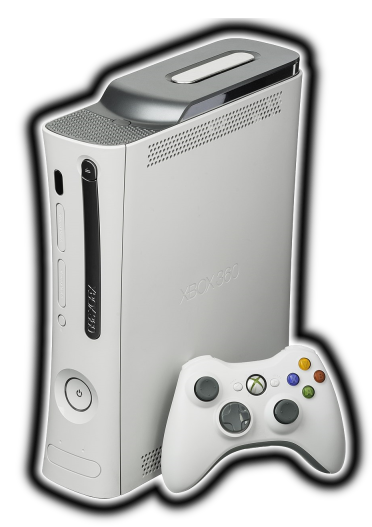 |
||||||
Microsoft kickstarted the seventh generation early when they brought out the Xbox 360, their second and arguably most memorable console (though memorable for both good and bad reasons perhaps), and the first HD console to ever be released. This was a console that was chock full of ideas, released pretty early in the generation at a very competitive price. Microsoft had learnt some lessons from the public's reaction to their previous machine, putting a lot more work here into designing a sleek and stylish machine with a striking design and name (of course immediately afterwards they reversed this and decided to go with endless confusing naming conventions and nondescript black cubes for all their future console designs, but I digress!). Other than the look of the machine itself, they'd also taken note of the lack of Japanese 3rd party support of the original Xbox, and to make sure this didn't happen again they invested heavily in Japanese companies and provided various incentives for 3rd parties to release their games on the 360 first. All this groundwork resulted in a great launch line-up, and a quick growth of releases that ended up providing the 360 with an absolutely huge stellar line-up of diverse titles, including many JRPG's and more niche titles like shoot-em-ups that were largely absent from the original Xbox. The earlier work that had been done to produce recognisable IP's for the original Xbox was of course also continued here, with new titles in the Halo, Forza, Fable and Project Gotham Racing series making a welcome return. Outside of the Physical games, much focus was also put on downloadable games too, with the excellent Live Arcade service featuring many wild and wonderful indie games with interesting concepts that would likely never have been able to get a full release. This service helped to bring back a plethora of 2D games, and simple yet clever puzzle titles that had fallen into disrepair during the previous generation, and also provided a lifeline for smaller developers that had been pushed out of the primary market when development costs had shot though the roof, and a path to success for newer start-ups wanting to enter the market. The area where Microsoft really excelled themselves though was the system's structure. Every 360 came with a wireless controller as standard, and the fully-integrated Blades Dashboard was phenomenally well thought out, allowing quick navigation with messaging and cross-game chat, as well as access to your settings and music library at all times. No longer were custom soundtracks reliant on the developer of each game choosing to add them, due to the 360 dashboard the feature was automatically available to all titles. Each player created a gamer profile on startup, which meant that everyone would have a online persona that kept track of their reputation, achievements and controller preferences, universally applying camera preferences such as invert look across all games for example. The aforementioned achievements were also an excellent idea and really incentivised people to master their games for the extra kudos. Microsoft outdid themselves and it took the competition years to catch up, and more features would also arrive with downloadable updates. In 2008 360 owners gained access to Netflix, and player avatars also came to the console. These were essentially knock-offs of Nintendo's Mii's, but somehow were actually more limited in some ways, with the only real improvement being in regards to their outfits and accessories, many of which could be won in games by accomplishing certain feats, this kind of functioned as a way to augment the achievement system and was probably the best thing about them. The 360 was an excellent feature-packed console with tons of great games, and, in fact, it would've actually been even higher on the list if not for one factor... it was shamefully unreliable, quite possibly the most unreliable console in the history of gaming! This was especially true of the first couple of years before they started to get a handle on the infamous and ever-present Red Ring of Death, a fault that signaled the death of any 360 unfortunate enough to display it (and ended up befalling most of the early models). Over time the models became more and more reliable until the Jasper model arrived and largely signaled the end of the 360's unreliability issues. Had Microsoft's returns policy not been as robust as it was and they not spent a billion dollars repairing and replacing all the broken machines I would've probably had to have dropped the system out of the top 20 entirely just due to its unreliability! Reliability aside, the 360 really was an imaginative and innovative console, sadly it seems more and more unlikely as time goes on that Microsoft will ever make another console that will live up to it. |
||||||
| ------------------------------------------------------------------------------------------------------------ | ||||||
| #06 | Playstation 2 (2000) |
|
||||
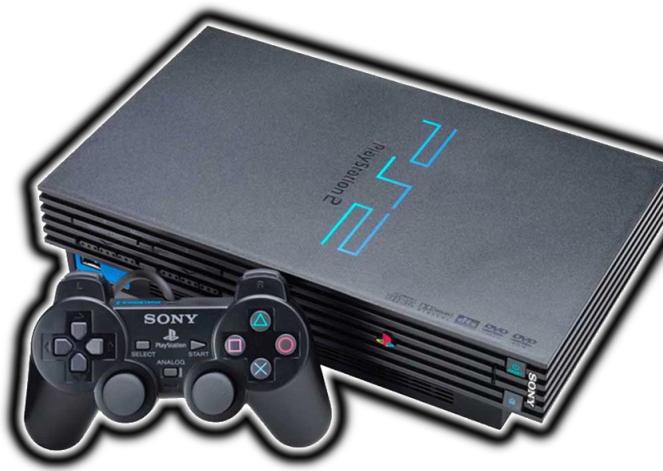 |
||||||
In a lot of ways this was where modern gaming began, this is where everything became big business. Large teams and professional productions became the norm here, with actual writers and voice-actors replacing the amateurish though often charming voice-acting and dodgy translations of old. Many of the major genre's were now becoming established, and having that sweeping story and cinematic feel down pat pretty much became a requirement for every major game if it expected to get those rave reviews. The PS2's game library was huge and more often than not it was the place to go for the hot games, and it dominated like no console had since the days of the NES. Releases like Ico and Shadow of the Colossus, Okami, and the Ratchet and Clank and God of War series' had completely supplanted those of rivals like Nintendo, who had previously been the provider of some of the biggest genre defining titles of the past, but were now largely caught on the back foot playing catch-up. Its very easy to see why the PS2 often tops people's lists of greatest consoles of all time. Personally though I cannot, however, rate it higher than the original Playstation for reasons I'll attempt to cover here. To my mind all the systems in the top seven of this list have phenomenal libraries full of more games than most could play in a life time, but I would say that the PS2s software library, whilst huge in number, much larger than any other console, is a little more conventional than that of the original PS1. This would perhaps be quite a contentious and arguable statement but something I think is less arguable is that the hardware itself of the PS2 was not as innovative and forward thinking as that of the PS1. Whilst the games library is largely without fault, I feel the actual hardware of the PS2 is kinda' the opposite, and was possibly the most feature poor of the major consoles of that generation. Support for progressive scan was the lowest of the four consoles, it was almost certainly the hardest of them to develop games for, had the fewest controller ports, and it was the only one to not support PAL60 in Europe either, going instead for the less compatible here but easier to implement NTSC-60 (which, frankly was a bit of a kick in the teeth given how popular the Playstation brand was over here, and how loyal the fanbase was). Two of the consoles of its generation the Dreamcast and Xbox had both come with internet as standard, whilst not until the Slimline model was released was this the case with the PS2, and by the time online gaming had come to the west on PS2, Dreamcast owners had been playing Phantasy Star Online and Quake III Arena for well over a year. Where hardware innovation was concerned it was the original Xbox with its hard drive and custom soundtracks that feels closer to the direction the industry would take. The hard drive especially makes the playing of games on the Xbox a much smoother experience, with many Xbox games even auto-saving their progress and such before this would become standard. The hardware itself just did not wow me in the same way as the Dreamcast, or PS1, or even the Mega Drive did when I first experienced them. Still, it must be said that the hardware, while low on features was actually very powerful for the time and had tons of potential, potential that was eventually tapped by more talented programmers as the generation went on, causing fully optimised PS2 games under the right circumstances, like in the case of Criterion's Burnout Revenge for example, to produce graphics that could rival and sometimes even surpass in some areas, more powerful systems like the Xbox and GameCube that were released a year and a half odd later than the PS2! And it cannot be understated just how much of a success the PS2 was, it was the highest-selling video game console in history and its crown is unlikely to be lost any time soon. The games were phenomenal, and were hyper-polished and forward thinking, it ended up being home to many critical darlings, and its success also facilitated a whole host of memorable accessories and peripherals too. This was the console that gave us Guitar Hero, the earlier mentioned "Buzz", and the Eyetoy, an early attempt at providing motion-controlled games that used a small camera mounted on your TV, very much like a cruder implementation of what would later become Xbox's Kinect device. It was a massive release, and with the inclusion of DVD playback it was also the cheapest DVD player on sale for its first few months, finally realising all of those dreams that so many had had back in the days of the CD-i and 3DO of providing an all-in-one multimedia console out of the box that could deal with all of your entertainment needs. |
||||||
| #05 | Mega Drive/Genesis (1988) |
|
||||
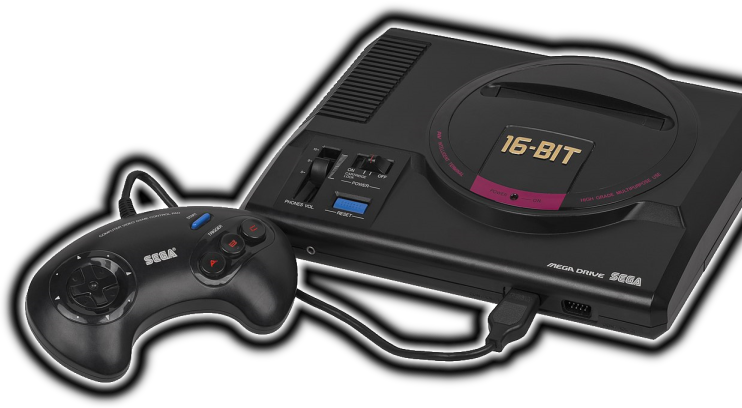 |
||||||
Now full disclosure, the next two consoles I consider to actually be roughly on par with each other, but given that I know that awarding a draw would be viewed as an unacceptable cop-out by most people, at much protest to myself.... in 5th we have the Mega Drive and in 4th the Super Nintendo. For me these are the perfect counterparts to each other, the yin and yang of gaming consoles so to speak, with one focused a little more on adventuring and RPG and puzzle aspects, and the other more on hardcore arcade experiences, shoot-em-ups, run and gun games and the like (though make no mistake both do have numerous examples of games of the opposing side, I'm just talking of specialties here). Many consoles throughout the years prior to the Mega Drive had claimed to finally be the one to quote "bring the arcades to the home" but as far as I'm concerned the Mega Drive was the first and finest to actually do it. I would argue, perhaps counter-intuitively that even the Neo Geo didn't quite do as good a job at capturing that feel of the grimy, murky arcade parlours of the time, due primarily to its lessor software range. Perhaps the likes of Strider and Ghouls n' Ghosts had downgraded colours in comparison to their arcade counterparts, but they still recreated the look and feel of those games admirably for the time, and at an affordable price for the consumer. The Mega Drive was the birthplace of Sonic the Hedgehog, a character that would become a gaming icon rivaling even Mario, and who would end up starring in numerous sequels and spinoffs, cartoons and even his own series of successful movies, and here he was appearing in a stunningly fast action game that was a technical showpiece and killer app for the Mega Drive that wowed gamers when first released in 1991. The role of pushing the system was then passed on to Japanese companies like Treasure who brought some of the craziest and most impressive run 'n' guns of the era to the system, showing the speed advantage of the Mega Drive hardware in comparison to its competitors in all its glory. The Mega Drive was a joy for anyone who wanted exciting, balls-to-the-wall action games, but it was also a leader with real time strategy games as well, with titles like Herzog Zwei, and ports of important computer releases like Dune II and Mega Lo Mania gracing the system, not to mention the Japan only Advanced Daisenryaku, which had a fully functional competitive online multiplayer in Japan. In fact the Mega Drive seems to have been the first console to have online multiplayer functionality... period, through its Mega Modem add-on. Prior consoles had gone online before for sure, all the way back to the old Intellivision and Atari 2600, but previously they had been limited to downloading simple games or extra content, never to connect with another player to play competitively. Sega's willingness to always experiment with add-on's and new hardware was one of their more interesting qualities, but also an aspect which largely helped lead to their downfall, with the many failures piling up and hurting their brand name through the years. In closing the Mega Drive was a powerful and exciting system for its time, and at no other stage in gaming has there been a closer competition between two consoles, with the Mega Drive and SNES competing neck and neck against each other in North America for pretty much the whole generation. |
||||||
| ------------------------------------------------------------------------------------------------------------ | ||||||
| #04 | Super Nintendo (1990) |
|
||||
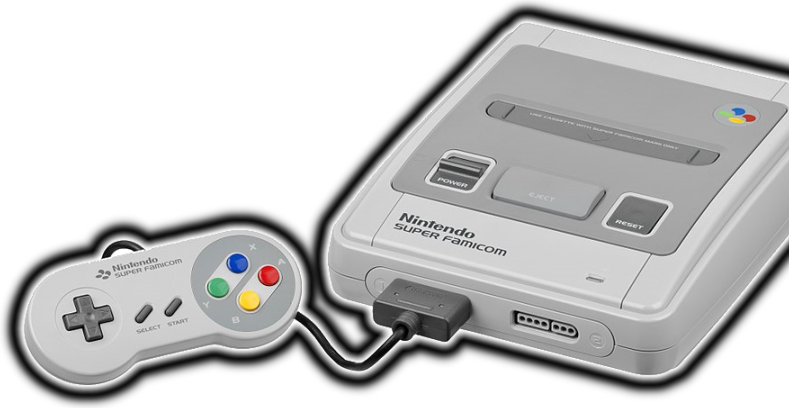 |
||||||
The Super Nintendo, one of the clear fan favourites of the retro-gaming community! Confident in their position as market leader in the world of video gaming, Nintendo waited 7 years to release their much-anticipated successor to the Famicom, but when the console did arrive it did not disappoint, it was a nice looking machine (well, it was in Japan and Europe anyway!), which provided much-anticipated sequels to all of the beloved NES classics. Mario, Zelda, Metroid, Mega Man, Castlevania and many others appeared thick and fast, and they were bigger and better than ever. The system featured a solid hardware design, with the system's ability to rotate and scale the background (usually just referred to as "Mode 7" for the sake of brevity) being the primary positive. Now sure the Mode 7 was often just used as a gimmick, but in other areas, such as racing games it provided a very real advantage that allowed the SNES to dominate the competition. Instead of driving down endless straights which alternated between the odd curving left, and curving right, which was the typical racing set-up of the time for rival consoles, using Mode 7 the SNES could actually do more complex, proper courses with U-turns and smooth 180 degree panning. To highlight this feature of the hardware Nintendo also created two of what would become their biggest racing franchises, F-Zero and Mario Kart. The rotation and scaling features were also useful in other areas. With clever tricks we got to see epic bosses seemingly rotating and scaling around the screen, and in JRPG's we got to fly over and explore huge landscapes in games like Secret of Mana and the Final Fantasy titles. The SNES' impressive colour usage and pallet for the time was also a big boon here, with beautiful environments that would contain phenomenal Japanese pixel art that would often put the efforts on rival systems to shame. And what JRPG's they were! The Japanese output for the genre took an absolutely huge leap forwards here. JRPG's really came into their own and discovered their identity, really starting to differentiate themselves from traditional western RPG's, with sprawling worlds and unwinding plotlines and narratives of the like rarely seen before in gaming. The SNES really was an RPG powerhouse, especially so in Japan where a number of games unfortunately never left, those reams of character dialogue were just too much of an expensive undertaking to translate into English back in the day, in an era when JRPG's were still quite niche here in the west. Another thing we saw was a big expansion in the prevalence of games that featured battery-backed saves, these had existed during the days of the NES and Master System but here with the SNES this started to gain a lot more ground. We saw the industry really starting to move away from the old ways of constantly forcing the player to restart every time they put on a game, playing through from beginning to end in one sitting on a set number of lives, and more towards the modern system of longer games that let you quickly and easily continue from where you left off, leading to deeper and more involving quests. The controller was also improved with a slightly more ergonomic design including a new diamond button layout, and side buttons, which had not been seen since the times of the video game crash, but would from now on be a stalwart feature of most controllers going forward. It wasn't all sunshine and rainbows though. Flushed with the success of the NES, Nintendo went into the 16-bit era quite overconfident, leading to the machine being perhaps a little bit too late to the party for its own good and giving Sega enough time to make some major inroads into the market. For a number of different reasons the hardware was also quite slow overall, which led to the SNES occasionally struggling with the more intense action games in comparison to its two rivals. There would also be an issue with censorship too, with Nintendo's western branches somewhat still being of the mindset that gaming was primarily a children's pastime, which led to the infamous SNES version of Mortal Kombat, a port of the popular arcade game which had made a name for itself for being gruesome and bloody, but in which the SNES version had replaced the blood with sweat and nerfed all the finishing moves! This was mainly the doing of Nintendo of America though, back in Japan the SNES would always receive a steady supply of horror games throughout its lifespan. In fact after losing ground to the Mega Drive and its version of Mortal Kombat, Nintendo of America also dropped their own stance on videogame violence like a ton of bricks and Mortal Kombat's sequels would subsequently be uncensored on the system just like the Mega Drive versions. The SNES was a fantastic machine, and it managed to age pretty gracefully as well. As we moved into the early 5th generation and saw new 3D consoles arriving Nintendo would release 3D titles for the SNES too, like Star Fox and Stunt Race FX. These were possible due to the inclusion of a graphics chip which was put into SNES cartridges in order to expand the capabilities of the console and provide simplistic 3d graphics. Second party companies like Rareware also managed to help keep interest in the SNES going by using advanced Silicon Graphics workstations to make their games Donkey Kong Country and Killer Instinct, and it was with the release of these titles that the SNES finally managed to equalise and pass the Mega Drive (or Sega Genesis as it was known there) in the United States, though the Super Nintendo never pulled this off in Europe where the Mega Drive continued to reign supreme. And now? The system's colourful and attractive pixel art means that it still looks fantastic to this day! |
||||||
| ------------------------------------------------------------------------------------------------------------ | ||||||
| #03 | Atari 2600 (1977) |
|
||||
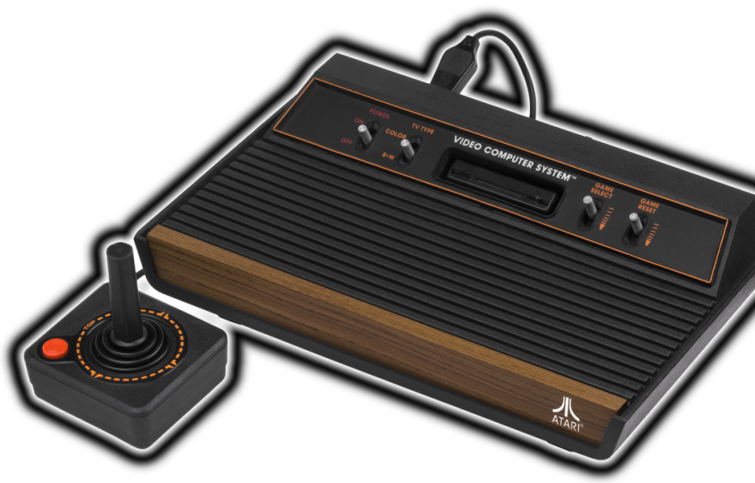 |
||||||
The Atari 2600 (or Atari VCS as it was originally called), was the first ever console to gain mass-market popularity and fully enter into the public's consciousness, the first to gain a large library of memorable games, and the console which to many represents the very genesis of gaming. It was an introduction to the media for so many of the people who would become die-hard fans from this point on. In fact I myself first experienced gaming on one of these things, I was too young to have experienced the 2600 when it was new but my family had bought one the year I was born and as a young child it was the only console I had access to. Playing games like Galaxian and Pac-Man were my first tastes of video gaming, before I was old enough to ask for a games console of my own. The hardware here is insanely crude by today's standards but also kind of genius in some respects. The 2600 is actually even cruder than it first seems, I for example never realised as a kid that programmers could only design the left hand side of the background! Without the use of programming tricks the right hand side has to be either a mirror image or copy of the left hand side! The hardware was truly only ever really designed to play games like Pong and Tank, but the 2600's design was so open that programmers were able to achieve far and away more than what was envisioned back when it was being designed, leading to it ably surpassing all of its contemporaries, and even resulting in passable ports of games like Kung Fu Master, 10 years after it had been launched! You wouldn't think it now but the Atari 2600 had a surprisingly slow start, it probably didn't help that the console was pretty expensive at launch (and it took a good while for the prices to drop), but all this turned around when the excellent home port of Space Invaders arrived. Space Invaders had been a massive hit in the arcades and everyone just had to own a copy of it of their own for the home. This was when the 2600 really started to take off into the stratosphere, and from this point on it just went from strength to strength, with huge numbers of classic games gaining release, and later games like Pitfall and River Raid representing the genesis of platform games and scrolling shooters. Unfortunately as is often the case with companies that achieve such meteoric rise, over time Atari started to rest on their laurels. Their disrespect to many of their own programmers led to an exodus of some of their most talented staff and the creation of Activision, who would start competing with Atari for software sales on the console as the first ever third party company. Then after this matters went from bad to worse as a lack of quality control, oversaturation of the market, and glut of shovelware being released for the system (including Atari's own over-produced, risible ET tie-in) was a major factor in causing a North American video game crash. Remember, these games were expensive! ET may have come out for around $30 in 1983, but that is the equivalent of somewhere around $100 in today's money! These games were not cheap! Well, before the crash they were not cheap anyway, after the crash however 2600 games were piled into clearance baskets across America. Even with the situation being as dire as it was the Atari 2600 would remain in production all the way up until 1992, a little under 15 years after it had been launched! The 2600 was a footnote in gaming history and a huge success, and it arguably dominated its generation in a way that no other console would manage to do to quite the same level. Unfortunately Atari would never really manage to recreate this success in the console world, not even really a small fraction of this success to be honest, becoming more and more irrelevant as time went on, and slowly having their company broken up and then passed around from new owner to new owner. Still their mark on gaming will never be forgotten. |
||||||
| ------------------------------------------------------------------------------------------------------------ | ||||||
| #02 | Playstation (1994) |
|
||||
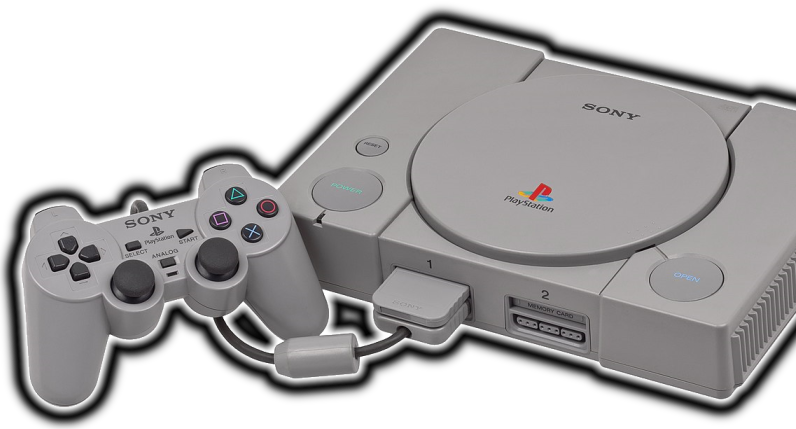 |
||||||
It honestly took me no time at all to decide on my pick as the best Sony console, such was my certainty on the matter.. and here it is the original Playstation! This was Sony's first foray into the console market and astonishingly for a newcomer they got pretty much everything right! The hardware direction, the price, the software support, the ease of development, the marketing, aesthetics and style of the machine, everything was right on the money. Sony positioned this as the hot product to own of the time and they successfully marketed the machine to new, older and trendier demographics, with the console doing a lot to destigmatise gaming and make it another pillar of prevailing cultural trends, they did this through savvy marketing and licensing deals, such as when real licensed music was included in popular games like Wipeout. Apart from everything else the system just has a huge library of interesting and unique games, there really was something for everyone here. The industry during the PS1 era was not quite the commercialised, big business monster it would become during the PS2 era, with smaller companies still providing the Playstation with a lot of eclectic and unique games and concepts, bolstering a large library of AAA titles from all the biggest third parties in gaming. On top of this Sony had gone the extra mile in making sure this system had the easiest development experience for programmers, as well as investing in and making lucrative deals with many 3rd party companies who were not quite reaching their full potential. Who's to say what the status of JRPG's would be in the West today if not for Sony piling so much money into Final Fantasy 7's Western release back then? Previously JRPG's had never really reached the level of popularity outside of Japan that they had in their home country, and half the time they were never even released in Europe at all, even the major ones! Many of the games that would gain popularity on the PS1 would end up becoming so big that they would dictate where the audience would go for subsequent consoles, sequels to games like Metal Gear Solid, Gran Turismo, Resident Evil and Tekken would be major factors in buying decisions going forward, and arguably would decide the victor in coming generations before they even began. We also saw what is arguably Sony's biggest contribution to the gaming industry here with the release of the dual analogue controller and its inclusion of a second analogue stick. This controller would end up creating an industry standard, with most subsequent controllers following suit and using the second stick for camera control. The controller would also feature two more buttons underneath the two analogue sticks, L3 and R3, which would also gain some traction with future controllers. The only real black mark against the PS1 is in regards to Sony's treatment of 2D games, strictly speaking Sony of America's treatment of 2D games, with them seemingly being dead set on blocking the releases of many good 2D titles from Japan. Now, I'm under no illusions, a lot of these games likely wouldn't have sold stellar amounts anyway due to the 3D-obsessed spirit of the times, but it would've been nice to have had the choice, especially given how excellent the PS1s 2D library was over in Japan. This anti-2D stance would reportedly cause a lot of problems between Sony and Capcom, who still had a lot of focus on 2D development at the time, which would carry into the next generation. All in all a phenomenal console though, and in retrospect I just find it very surprising that during a time where there was a lot of uncertainty and turbulence in the gaming industry, the company with the least experience had the clearest idea of the direction that the market was going, perhaps it was because they had the least pre-conceived notions about gaming? Or maybe they just did a lot more market research than any one else did! Regardless they played a blinder. |
||||||
| ------------------------------------------------------------------------------------------------------------ | ||||||
| #01 | NES (1983) |
|
||||
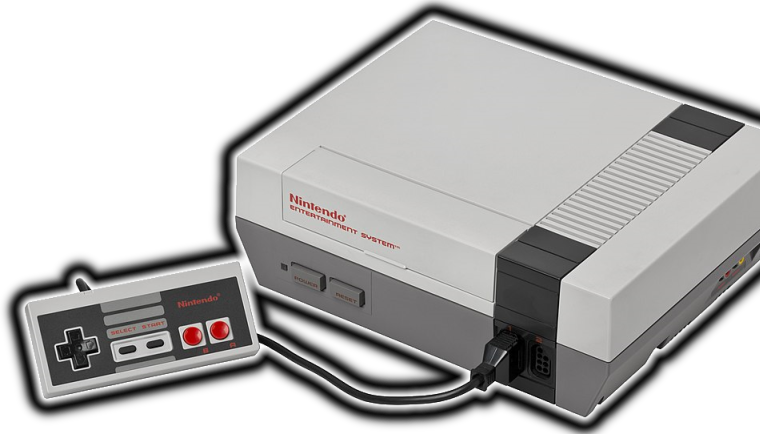 |
||||||
And finally we have the number one spot, which has to go to the NES, my favourite console of all time. This was the first time I can remember when the games really caught my imagination, they had memorable characters going on adventures through rich worlds and fighting against memorable adversaries. Previous games had gaming characters of course, the eternally hungry Pac-Man and the lego brick man Pitfall Harry spring to mind, but lets be honest, nobody was caught up in the high drama of Pac-Man! Though of course the narratives of these NES games were very simple by today's standards themselves, and people may, perhaps quite rightly scoff at the suggestion that the world-building of NES games should be characterised in such an enthusiastic light, but regardless, it can't be denied that the characters, worlds, and even soundtracks of NES games resulted in a plethora of franchises that are still hugely popular to this day. I do have to scale back a little though and make sure I don't get too carried away. Inroads in this area had already been made, but this was on computers as opposed to consoles. Before Link had set foot in Hyrule, Luxor and his band had explored the land of Midnight and Professor Atombender had threatened the player himself with destruction! But what the NES did was bring these advances to consoles and imbue them with console sensibilities like accessibility and immediacy. Not only were the games easier to use, they were easier to play too and often had polish, consistency, and quality of life improvements over their computer counterparts. And Nintendo had its seal of quality too, which assured a minimum set of standards, sure the standards could be quite low at times! but the NES at least was largely free from the plethora of catastrophically buggy, and often times literally impossible games that graced the computers of the time. Games like Zelda, Metroid, and Super Mario Bros were hugely influential in the history of gaming. And yeah, in some respects they were standing on the shoulders of giants, with them also taking a lot of their best aspects from emerging ideas in many arcade and computer games of the time, but they succeeded in being far more than the sum of their parts, combining many ideas into a more polished and cohesive experience. And Nintendo playtested the heck out of those games to provide much smoother gameplay with more precise controls. And where the controls were concerned? Well the NES had a pretty excellent controller for its time that was leagues ahead of the competition. Controllers like those of the Intellivision, Colecovision, and 5200's were often imprecise, overcomplicated, and actually just plain difficult to even hold and use for extended periods of time in general! The NES joypad took the best elements of earlier control methods, the D-Pad from Nintendo's own Game & Watches (which was a kind of evolution of the Intellivision's disk pad), and the pause button from the 5200, and they added a sufficient though not excessive number of buttons for what was required and then put them all into an easy to hold rectangle block. The D-Pad especially was just so much more precise than earlier controllers where it came to 2D games and would be a staple of controllers from this point on. The hardware in general of the NES was actually very powerful for the time when originally released in Japan in 1983 as well, being on par with the more advanced computers for a couple of years where it came to playing games and even including a pretty nice soundchip too. It was a very efficient, well rounded, and well thought out design that could be sold at a competitive price, and which could do a fine job of handling the types of games that were popular during the era. For better or worse a lot of what would become the standard structure in the gaming market would also be established here, with the NES being sold at a loss and money being made back on the software, bolstered with royalties collected from 3rd party games companies who would be given licence to create games for the console if (and its a big if) they following Nintendo's rules, and boy did Nintendo leverage their position as market leader when writing up said rules! Carrying out a lot of what can only be described as strong-arm tactics. The set of rules that Nintendo laid out would be honestly pretty brutal and would end up garnering them some much warranted criticism. Companies producing games for the machine were limited to only a set number of releases per year, they had to follow a bunch of censorship guidelines about violence and religious imagery, and most notorious of all would have to commit to their titles being exclusive to the NES for 2 years, a policy that would land Nintendo in hot water with the law as an anti-competitive practice later on. Going back to the beginning, as has been mentioned earlier in the list the US went through a videogame crash in 1983 and afterwards it was believed in that territory that gaming had been a fad that had come to an end. While this was going on in the US however, gaming was actually pretty healthy in Europe, where consumers had moved to computers, and Japan, where the lull in console gaming had never happened and things were really only just starting to get going. Nintendo were able to build up their strength in Japan and then gain the confidence to release the system in the US, to much resistance at first. Retailers were wary to commit to gaming again after such large losses in the past so Nintendo made a lot of funny changes to try to distance the NES from being perceived as a games console, calling it an "entertainment system" and its cartridges "game paks", as well as converting it to being a front loading mechanism, hoping to bring thoughts of VCR's and such to the minds of consumers. All of these changes would be dropped for later consoles so its hard to know how important they really were, but regardless the NES got into retail and became a huge phenomenon, leading a resurgence and recovery of the video game market in that territory on the wave of Super Mario Bros popularity. Not to say that the NES quote "saved videogaming" as many have liked to claim over the years. It was bound to recover in the US eventually anyway given what was happening elsewhere, but who knows what form it would've taken or how long if it hadn't been for Nintendo? The NES, like the prior 2 consoles was a major footnote in the advancement of gaming that had countless timeless classics and will probably remain my favourite console for the rest of my days! |
||||||
| ------------------------------------------------------------------------------------------------------------ | ||||||